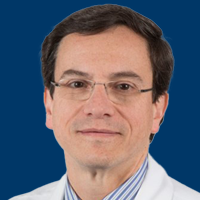Publication
Article
Oncology & Biotech News
"The Emperor of All Maladies"-The Amazing Biography of Cancer...Can We Do Even Better?
Thanks to the focus on progress in medicine, tremendous progress has been made in oncology, as illustrated in the recent 6-hour Ken Burns and Barak Goodman television documentary on cancer.
Andre Goy, MD
Editor-in-Chief of Oncology & Biotech News
Chairman and Director Chief of Lymphoma Director, Clinical and Translational Cancer Research John Theurer Cancer Center at Hackensack University Medical Center
Cancer has been around longer than the human race, with fossils of dinosaur bones showing evidence of cancerous cells dating back >80 million years ago. Signs of cancer have been found in Egyptian mummies from 3000 BC and in 1600 BC, breast cancer was already being treating with cauterization in Egypt. Around 400 BC, Hippocrates is said to have named masses of cancerous cells karkinos, which is Greek for “crab,” likely for the abnormal shapes of growing tumors. Thus, cancer is not a new phenomenon and as its history has shown, progress in medicine has always been a central focus for any society over the centuries.
Thanks to this focus, tremendous progress has been made in oncology, as illustrated in the recent 6-hour Ken Burns and Barak Goodman television documentary on cancer, which was based on the best-selling 2010 book by Siddhartha Mukherjee, The Emperor of All Maladies: A Biography of Cancer. The book focuses on the last 70 years, with stories of real people whose lives are upended by a cancer diagnosis. It shows how scientific breakthroughs have helped us understand how a normal cell becomes malignant and led to the development of numerous novel therapies.
The documentary was presented from multiple perspectives, such as stories and interviews with the first patients treated successfully using intensive and highly toxic regimens in pediatric ALL, as well as interviews with some of the doctors involved in their treatment. Other milestones covered include the first radical surgery, known as Hallstead (total mastectomy), performed in 1898; the first use of radiation in 1928; and the first chemotherapy (nitrogen mustard) administered to humans in 1943. Modern combination chemotherapy was launched in the 1940s-1950s, the first BMT was performed in the late 1950s, and the first concept of cure appeared in the early 1960s. The first monoclonal antibodies (rituximab) and the first kinase inhibitor (launching the era of new biologicals or targeted therapies) both appeared in mid 1990s.
Since then, an enormous number of new drugs have been added to our oncology armamentarium and today, more than 75% of the pipeline of medicine is in oncology. The most recent addition is the dramatic development of immunotherapy (cell therapy and checkpoints inhibitors, particularly) developed over the last 2 years, which definitely justifies the emerging field of immuno-oncology.
The “War on Cancer” was launched in 1973 and while its success and impact have been debated by some, others see unprecedented changes and accomplishments. Undoubtedly, one of the most significant advances was the completion of human genome sequencing in 2003, which has helped us understand cancer cells’ biology and started shedding light on their enormous diversity, offering a logical rationale for precision medicine (tailored therapy).
The enthusiasm of the science and hope it generates in patients and caregivers is wonderful and should encourage our society to invest further into research (not less, as is the current trend in public funding), while many issues should not be overlooked.
First and foremost, real scientific discovery is usually random and most advances in cancer are still incremental. Though the outcome of many cancers has dramatically improved over the years, for many others, treatment has changed very little, with outcomes that remain disappointing, such as in metastatic colon cancer, lung cancer, or pancreatic cancers.
The current model of funding does not typically encourage “outside-the-box” thinking or support not-yet established young scientists with novel ideas. Clinical trials are not encouraged enough (only 3%-5% of patients enrolled in the United States) for a number of reasons, including the complexity of the bureaucracy associated with clinical research. Furthermore, such trials, by their limitations and restrictions (eg, “unmet need target population” for regulatory purpose), become difficult to enroll, while drugs with really promising activity early on are never approved as compassionate use.
Providing a rationale basis to a trial (with companion test) rather than a “defined” unmet group of patients should be our focus. This might help develop drugs faster— ie, a drug is approved based on molecularly defined, small phase II cohorts, instead of large, randomized phase III studies that often fail due to a dilution effect. This, in turn, would (should) help reduce the cost, which is currently established using a non-sustainable model, particularly in light of many novel agents given orally for years, let alone future use of “chemotherapy-free” combinations that are currently being developed.
The abandonment of chemotherapy is definitely an overstatement. In many aggressive cancers, chemotherapy enables the achievement of a complete remission that, for a significant number of patients, translates into cure. An emphasis should be made on continuing the manufacturing of “old chemotherapy” drugs, which too often, as they became generic, have been literally abandoned over the years. Our goal should be to build on already known results (“old regimens”) by using combination or maintenance/consolidation strategies to improve the “mileage” for every patient.
On the other hand, novel therapies might help develop new regimens (biological combinations) that might change the paradigm as we are starting to see with BCR inhibitors in CLL, particularly for elderly patients or patients with known chemorefractory disease (eg, those with p53 deletion).
Finally, while treatments are, of course, of paramount importance to anyone with cancer, from a global perspective, prevention efforts should also be emphasized. It is estimated there will be a 46% increase in cancer incidence in the next 30 years, and almost half of these incidents are preventable.
On a positive note, the strongest memory of one of the first pediatric ALL patients successfully treated decades ago had to do with his first experience watching TV shows (he had TV access only in the hospital), reminding us that there is a human being behind all of our research, and we must never forget that.










